NEXGARD SPECTRA FOR DOGS

What is NexGard Spectra?
It protects against

Fleas

Ticks

Heartworm

Worms

Mites
5 different weight ranges
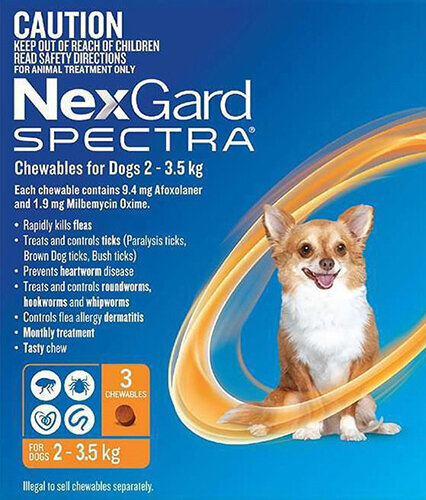 |
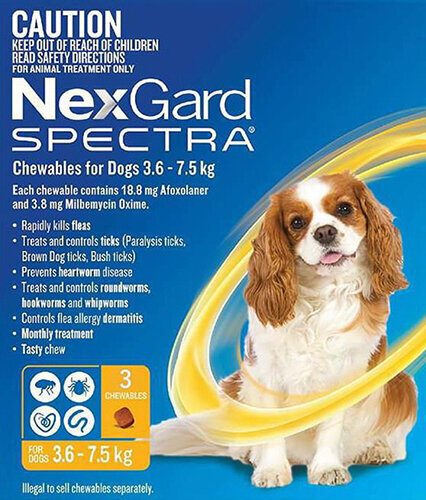 |
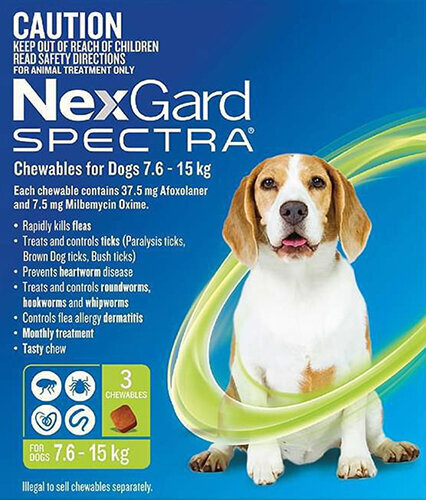 |
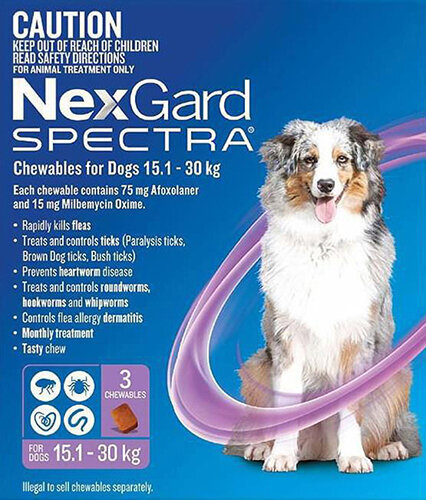 |
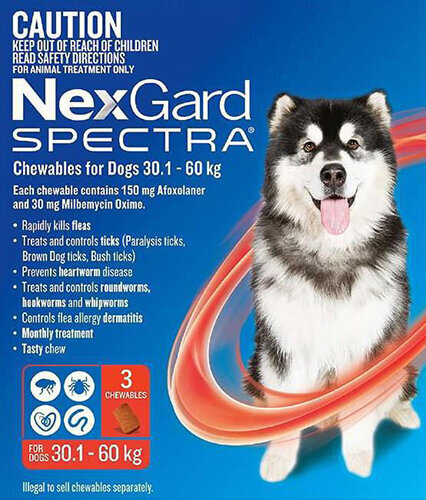 |
|
|---|---|---|---|---|---|
| Dog Weight (lbs) | 4.5-8 | 8-16 | 16-33 | 33-66 | 66-130 |
| Dog Weight (kg) | 2-3.5 | 3.5-7.5 | 7.5-15 | 15-30 | 30-60 |
| Chewable size (g) | 0.5 | 1 | 2 | 4 | 8 |
| Afoxolaner (mg/chew) | 9.4 | 18.8 | 37.5 | 75.0 | 150.0 |
| Milbemycin oxime (mg/chew) | 1.9 | 3.8 | 7.5 | 15.0 | 30.0 |
Active Ingredients
Afoxolaner
- fleas
- ticks
Afoxolaner is absorbed into the bloodstream and distributed throughout the body where it is ingested by parasites as they feed. The drug works by blocking the transmission of neuronal signals, resulting in hyperexcitation, paralysis and death.
The use of Afoxolaner in NexGard Spectra has been approved by the European Medicines Agency and the Australian Pesticides and Veterinary Medicines Authority (APVMA) in 2015. An EU field study showed that a single treatment with NexGard Spectra reduced the number of fleas and ticks on dogs by 95% and was effective for up to 30 days after administration.
Milbemycin Oxime
- heartworms
- intestinal worms
- mites
It works by interfering with the glutamate neuro-transmission, leading to paralysis and death.
The addition of Milbemycin Oxime to the NexGard product was approved by the European Medicines Agency and the Australian Pesticides and Veterinary Medicines Authority (APVMA) in 2015. An EU field study showed that the administration of NexGard Spectra reduced mange by 96-99% after a single dose, prevented heartworm in 100% of dogs when given monthly for six months, and was as effective at treating intestinal worms as other active ingredients.
Vs Other Brands
 |
 |
 |
 |
 |
|
|---|---|---|---|---|---|
| Fleas | ✔️ | ✔️ | ✔️ | ✔️ | |
| Ticks | ✔️ | ✔️ | ✔️ | ||
| Heartworm | ✔️ | ✔️ | ✔️ | ||
| Roundworms | ✔️ | ✔️ | ✔️ | ||
| Hookworms | ✔️ | ✔️ | ✔️ | ||
| Whipworms | ✔️ | ✔️ | |||
| Mites | ✔️ | ✔️ | ✔️ | ||
| Dosage | Monthly | Monthly | Every 12 weeks | Monthly | Monthly |
Parasites
Fleas
Fleas are one of the most common parasites found on dogs. Not only are their bites irritating to your pet, but they can also cause a number of diseases and conditions including:
- Flea allergy dermatitis
- Tapeworm
- Bartonella/cat scratch disease
- Anemia
Distribution and habitat: Fleas are widespread throughout Europe, the Americas and Australia. Inside the home they can often be found on carpets, bedding (in particular your dog’s bed) and drapery. Outside they prefer areas that are shady, warm and moist.
Life cycle of a flea
1) Egg
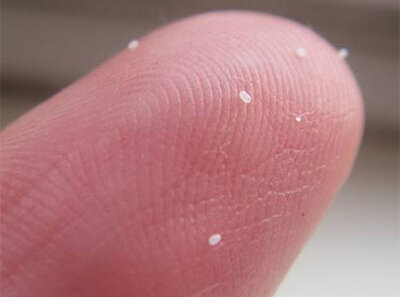
2) Larva
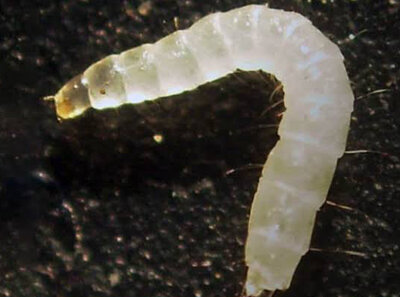
3) Pupa
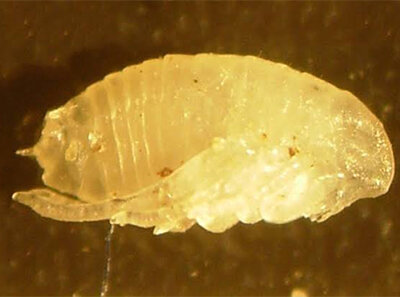
4) Adult
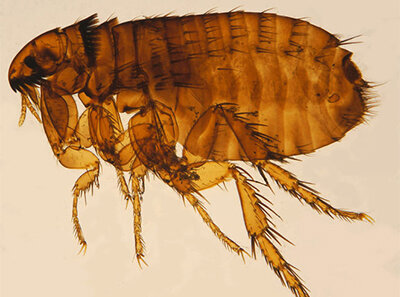
Symptoms of flea infestations
Persistent scratching
Yes, there may be a number of reasons that your dog scratches, just like humans get itches from time to time. But if you notice your dog persistently scratching, it might be time to look for further evidence of fleas – particularly if your dog is scratching around the head, neck, tail and groin.
Live fleas
This may seem like an obvious thing to point out, but where there is one flea, there will be many more. If you have seen a live adult flea on your dog or in your home, you can guarantee that there are not only other adult fleas, but hundreds or thousands of eggs and larvae.
Flea dirt
This is the polite name that is given to flea feces, which is actually made up of digested blood from your pet. You may see this ‘dirt’, which looks like finely ground pepper, either on your pet’s skin under the fur or in their bedding and other parts of the home.
Hair loss
Fleas themselves don’t actually cause hair loss, but the constant scratching, biting and licking in one place can cause your dog’s fur to fall out. You’ll most likely see this at the base of the tail, the shoulder blades or along the back of the legs.
Irritated skin
Check the skin around the areas your dog has been scratching and you may be able to see evidence of the bites themselves. They will appear like small red bumps under the fur. If your dog develops a sensitivity to flea saliva, this is known as flea allergy dermatitis, and can lead to more serious issues.
Pale gums
In very old or very young dogs, the blood loss caused by flea bites can be enough to cause anemia. Fleas can ingest up to 15 times their body weight in blood, and with a heavy infestation this is a significant amount of blood for a dog to lose.
Flea borne diseases
Flea allergy dermatitis
All flea bites cause some irritation to pets, but dogs can also develop a particular sensitivity to flea saliva, known as flea allergy dermatitis (FAD). This allergic reaction is in response to a particular protein in the flea saliva, which is injected into the skin. If a dog has FAD, even a single flea bite can cause weeks of itching and make your dog miserable.
Symptoms: Itching and discomfort are the early signs of FAD, but the constant scratching, licking and biting will go on to cause other subsequent problems. Look for a rash or raised red bumps on the dog’s skin, raw or bleeding areas patches of skin, hair loss around the affected areas or any signs of infection.
Tapeworms
Unlike other intestinal worms, tapeworms are transmitted when a dog ingests a flea that has been infected with the tapeworm larvae. By eradicating fleas, you can prevent tapeworm before it is spread to the dog. The eggs settle in the intestine where they grow into adults, attaching themselves to the lining of the gut.
Symptoms: Tapeworms are not usually harmful and a dog will tend not to develop any physical symptoms, though they may lose weight if the infestation is particularly bad. The most common sign is a dog ‘scooting’ as they try to scratch their anus as the dried tapeworm segments cause irritation as they exit.
Anemia
Though not actually a disease, anemia is a health condition that can develop in cases of heavy flea infestations. Anemia is the physical state of not having sufficient red blood cells or hemoglobin in the bloodstream. Anemia can be caused by a number of things, but blood loss from continued flea bites is one of them, particularly in particularly young or old dogs.
Symptoms: The most definitive sign of anemia is pale pink or even whitish gums. However the dog may also show signs of fatigue, weakness and depression. Although these symptoms are mild, the condition can be serious if left untreated.
Bartonellosis
Caused by the bacterium Bartonella, this is an infectious bacterial disease that can affect a number of animals. In humans, it is known as cat scratch disease, although it is not always caused by being scratched or bitten by a cat. The disease is transmitted to dogs by biting insects that carry the bacteria including fleas, ticks, lice and sandflies.
Symptoms: Not all dogs display signs of the disease, or only suffer from very mild symptoms. Others may suffer from symptoms as wide-ranging as lethargy, vomiting, fever, diarrhea and cough through to enlargement of the spleen and liver, and inflammation of the lymph nodes, heart muscles and brain.
Ticks
If you find ticks on your dog, you can try to remove them yourself by following these instructions.
Worldwide
Brown dog ticks
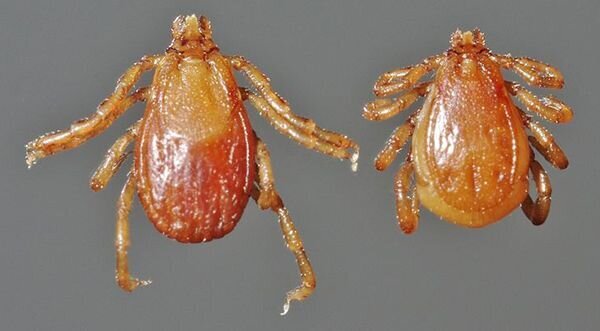
Scientific name: Rhipicephalus sanguineus
Diseases carried: The brown dog tick, also known as the kennel tick, is well-known for being the transmitter of several diseases worldwide including Babesiosis, Ehrlichiosis, Anaplasmosis and Rocky Mountain Spotted Fever.
Distribution and habitat: Can be found worldwide, but usually in warmer climates. This tick can often be found in kennels or in the home, unlike other ticks that prefer to live outdoors.
North America
American dog ticks
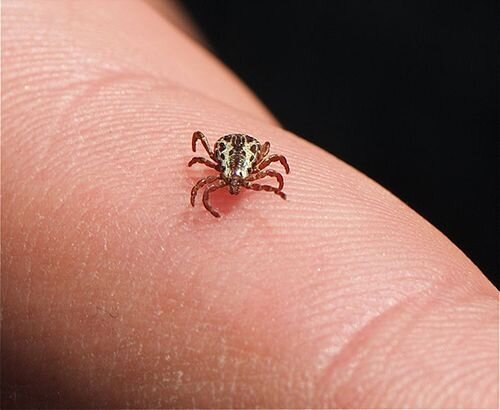
Diseases carried: American dog ticks, also known as wood ticks, are known vectors for Rocky Mountain Spotted Fever and Tularemia. The bite from the tick can also cause tick paralysis in dogs as the tick releases neurotoxins while feeding.
Distribution and habitat: Found throughout North America. American dog ticks prefer grassy areas, often close to woods or along hiking trails.
Deer ticks
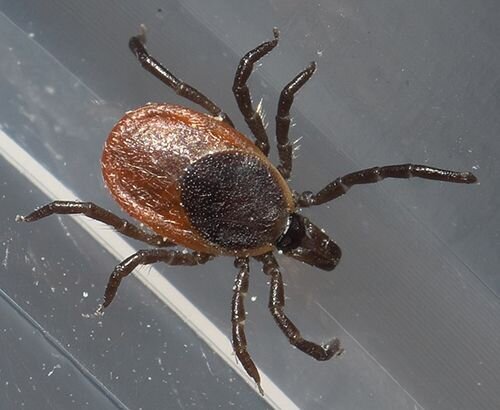
Scientific name: Ixodes scapularis
Diseases carried: Also known as the black-legged tick, the deer tick is the primary transmitter of Lyme Disease in the United States.
Distribution and habitat: Found in Eastern North America only. Deer ticks like shaded, humid habitats such as woodpiles.
Lone Star Ticks
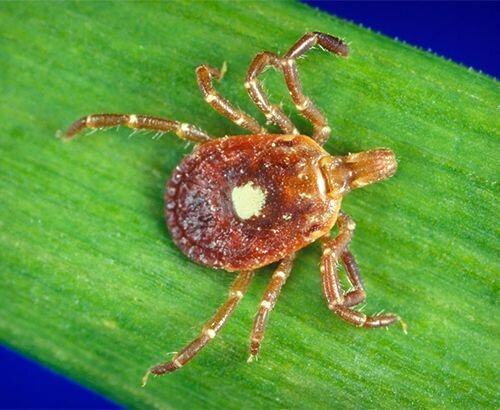
Diseases carried: Lone Star ticks are problematic not only for the diseases they carry, but also for the fact they will actively seek out hosts. These ticks are known vectors for Ehrlichiosis and Rocky Mountain Spotted Fever.
Distribution and habitat: Found in the South Eastern United States and Mexico. Lonestar ticks prefer wooded areas with thick undergrowth.
Europe
Marsh ticks
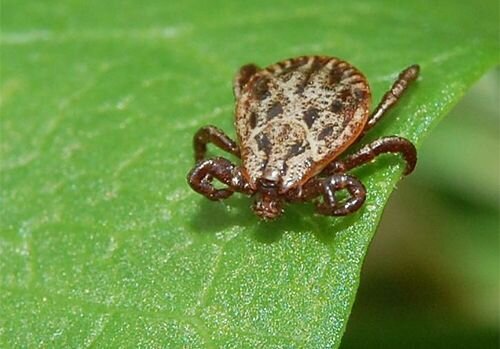
Diseases carried: Marsh ticks or meadow ticks are known transmitters for a number of diseases in pets including Babesiosis, Tularemia and Q fever.
Distribution and habitat: Found in mainland Europe, western Asia and some parts of the United Kingdom. Marsh ticks most commonly inhabit open grassy areas but can also be found in forests or parks.
Castor bean ticks
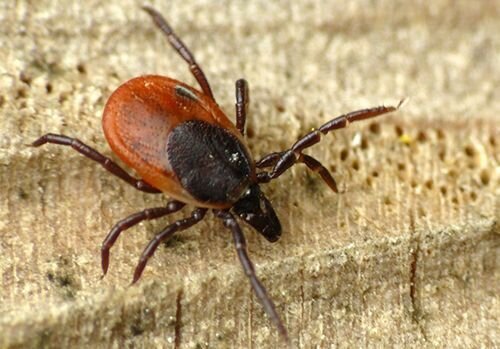
Diseases carried: Castor bean ticks or sheep ticks are the primary vectors for Lyme disease in Europe, which is transmitted by the deer tick in the Americas. They are also known vectors for Anaplasmosis.
Distribution and habitat: Found throughout Europe, as well as parts of North Africa and the Middle East. Castor bean ticks inhabit areas of dense undergrowth with moist soil.
Hedgehog ticks
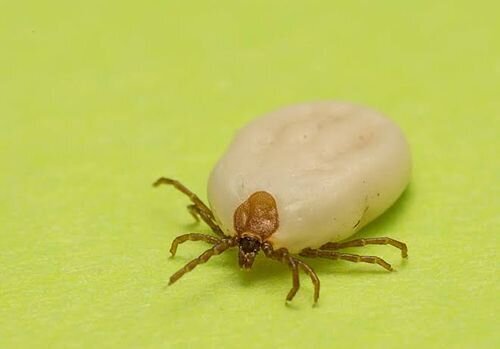
Diseases carried: Hedgehog ticks are known to spread Lyme disease. It is one of the most common ticks found on pets in Europe.
Distribution and habitat: Found throughout western Europe but known to live as far east as Siberia. These ticks are found wherever there are hedgehogs and their nests, including gardens, parks and hedges.
Australia
Paralysis ticks
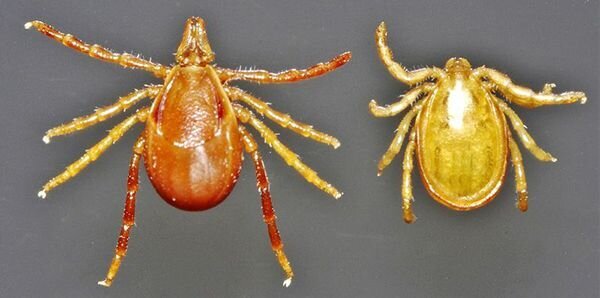
Diseases carried: The most problematic aspect of this tick is not the diseases it carries, but the tick bite itself. As the tick feeds on an animal it injects neurotoxins which lead to paralysis and often death. These ticks are also carriers for Q Fever and Rickettsial Spotted Fever.
Distribution and habitat: Australia only. It can be found within 20km of the eastern coastline, particularly in rainforest areas.
Asia
Bush ticks
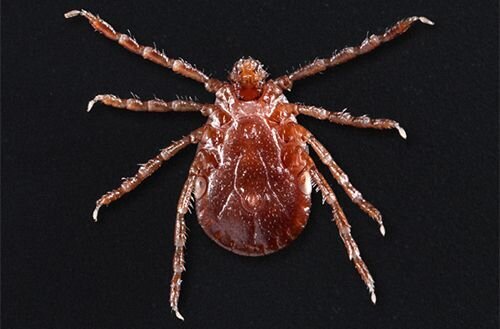
Diseases carried: Bush ticks predominately feed on cattle, and are also known as cattle ticks, but they have been known to feed on smaller animals including dogs. They can transmit Babesiosis and Ehrlichiosis, as well as cause anemia.
Distribution and habitat: Mainly found in the Asia-Pacific region including Japan, Korea, China, Australia, New Zealand and Hawaii. Bush ticks live close to the ground in warm, sheltered places.
Life cycle of a tick
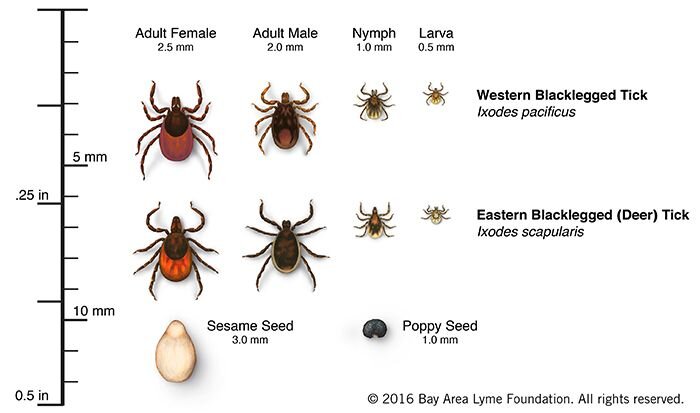
1) Egg
A female tick will generally return to the ground to lay eggs, though some remain on the host, producing anywhere from 1,000-18,000 eggs. Hard tick females will die after laying.
2) Larva
The six-legged larvae that emerge from the eggs are also known as seed ticks. Once hatched, a tick will need a blood meal at each stage before being able to develop.
3) Nymph
One the larva has molted it emerges as an eight-legged nymph, which looks like an adult tick only smaller. Again, they require a blood meal for development, but nymphs often do not feed during winter.
4) Adult
After the final molting the tick emerges as an adult, and the tick will seek out a large host for feeding. Once engorged, the tick will find a mate. Male ticks will often die after mating.
Tick borne diseases
Lyme Disease
Lyme disease is one of the most prevalent tick-borne diseases worldwide and can cause a number of confusing and long-lasting health issues. The disease is caused by bacteria known as Borrelia burgdorferi, but is transmitted to dogs (and other animals, including humans) by the bite of an infected tick. Depending on the part of the world, different ticks are carriers for this bacterium, but the most common vectors include the deer tick, the black legged tick and the castor bean tick.
Symptoms: Usually include inflammation of the joints, causing pain and lameness, which can often reoccur sporadically for years after the initial infection. Other common symptoms include fever, loss of appetite, dehydration and lethargy. In extreme cases, Lyme disease can lead to kidney failure.
Rocky Mountain Spotted Fever
Once confined to the United States, Rocky Mountain Spotted Fever (RMSF), is now a risk to dogs in Canada, Mexico and South America. Like other tick-borne diseases, RMSF is actually caused by a bacterium, in this case Rickettsia rickettsia. The main carrier of RMSF is the American dog tick, though it has also been attributed to the brown dog tick and the Lone Star tick. The disease affects the nervous system and can be fatal if left untreated in both dogs and humans.
Symptoms: During the early stages, symptoms include a fever, followed by loss of appetite, lethargy, inflammation of the joints, swelling of the lymph nodes, abdominal pain, diarrhea and vomiting. If left untreated, hosts may develop deep red spots in the mouth and eyes caused by internal bleeding.
Babesiosis
This infection is caused by the presence of the parasite Babesia in the blood, and is transmitted when infected blood from one animal enters the bloodstream of another. In dogs, the most common method of transmission is through the bite of a tick, but Babesiosis can also be passed on through bites from infected dogs, through blood transfusions or from mother to pup while in the uterus. The main carriers of the parasite are brown dog ticks, marsh ticks and bush ticks.
Symptoms: Symptoms are due to both the infection, and the anemia that it causes. Dogs will present with loss of energy, loss of appetite, pale gums, fever, weight loss and discolored urine and stools. In acute cases dogs will have an enlarged spleen and swollen lymph nodes.
Ehrlichiosis
There are several strains of bacteria that cause this condition, but the one that is most commonly found in dogs is Ehrlichia canis. The other strains, although related, cause different clinical diseases. Ehrlichiosis is transmitted exclusively by tick bites, with the most common vectors being the brown dog tick, bush tick and lone star tick. The disease affects the white blood cells and is usually more severe in German Shepherds and Doberman Pinschers.
Symptoms: In the acute phase, the disease will cause fever, breathing problems, bleeding, weight loss and swollen lymph nodes. At the subclinical level, the dog has no symptoms but the disease will continue to progress. At the chronic stage symptoms include anemia, hemorrhages, neurological symptoms and swollen limbs.
Tularemia
Also known as ‘rabbit fever’, tularemia is a bacterial disease that affects a wide range of animals including dogs. While it can be transmitted in a number of ways including ingesting infected animals (such as rabbits) or drinking infected water, tick bites are the most common means of transfer. This includes bites from marsh ticks and American dog ticks. Although tularemia affects dogs less commonly than other animals, it can be fatal if not treated early.
Symptoms: Include sudden high fever, lethargy and loss of appetite. Other signs of infection include abdominal pain, jaundice, enlarged liver and spleen, and even organ failure.
Anaplasmosis
This is an infection caused by one of two strains of bacteria, Anaplasma phagocytophilum and Anaplasma platys. A. phagocytophilum is much more common, but it’s possible for a host to be infected with both strains at the same time. The infection is transmitted through the bite of a tick, such as a castor bean tick, deer tick or brown dog tick. The tick needs to be attached for 24 hours to pass along the bacteria.
Symptoms: Usually develop in 1-7 days and include fever, loss of appetite, lack of energy, joint pain, vomiting, diarrhea, respiratory problems, coughing and seizures. The A. platys infection causes a decrease in platelets in the blood, which can result in bruising or unexplained bleeding.
Tick-Borne Encephalitis
Tick-borne encephalitis (TBE) is a viral infection that affects the central nervous system of the host. Previously only found in mainland Europe and parts of Asia, it has now been discovered in the United Kingdom. The virus has a number of strains, which relate to the kind of tick that transmits it. These ticks include the castor bean tick and the taiga tick.
Symptoms: Include fever, loss of coordination, tremors, convulsions and paralysis. Symptoms are often progressive and may lead to death.
Hemoplasmosis
Previously known as Hemobartonellosis, Hemoplasmosis is a parasitic blood infection that affects both dogs and cats. Two distinct bacterial species are responsible for the disease in dogs: Mycoplasma haemocanis and CandidatusMycoplasma haematoparvum. Hemoplasmosis can be transmitted by both fleas and ticks.
Symptoms: Symptoms of the disease can be mild, but can still lead to death if the infection is left untreated and reaches the spleen. Early signs include loss of appetite, pale gums, depression and fever.
Q Fever
Clinically known as Coxiellosis, Q Fever is a condition caused by the bacteria Coxiella burnetii. As well as dogs it affects a number of animals including sheep and cattle, meaning that dogs on working farms are more at risk of catching the disease. It is highly infectious, transmitted by both tick bites and tick feces, and can also spread to humans.
Symptoms: Symptoms may take up to one month to present, and are often very non-specific. Early signs include depression, lethargy, fever and seizures. Other signs may include an infected dog’s puppies being stillborn or born with deformities.
Heartworm
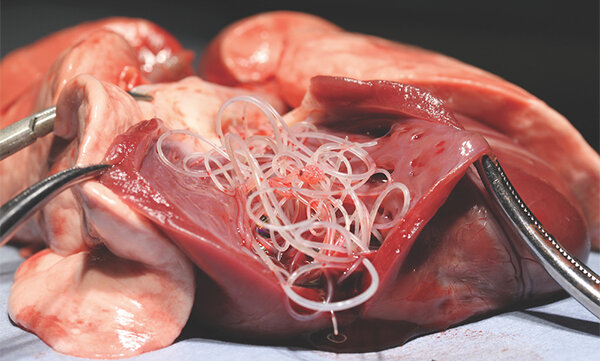
The dog heartworm is the cause of heartworm disease, a deadly and serious condition that can often be fatal in dogs. These worms are spread through mosquito bites, which infect your dog with heartworm larvae. Once the larvae have entered the bloodstream, they mature into adult worms causing damage to the heart, lungs and blood vessels. Heartworms cannot be transmitted directly from dog to dog.
Life cycle of a Heartworm
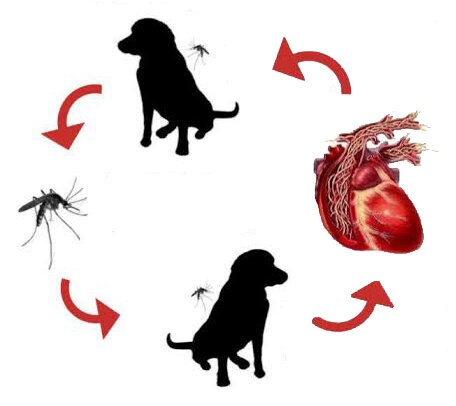
1) Microfilaria
These are microscopic larvae that exist in the blood of an infected host. When a mosquito feeds on this host, they take microfilariae with them.
2) Infective larva
Once inside the mosquito, the microfilariae develop into the next stage: infective larva. This usually takes around 2 weeks. These infective larvae are then transferred to a new host when the mosquito feeds.
3) Adult
Once the larvae enter the host, they enter the dog’s tissue. They mature as they make their way through the body to the heart. Here they take up residence in the pulmonary arteries, where they produce microfilariae.
Worms
Roundworms
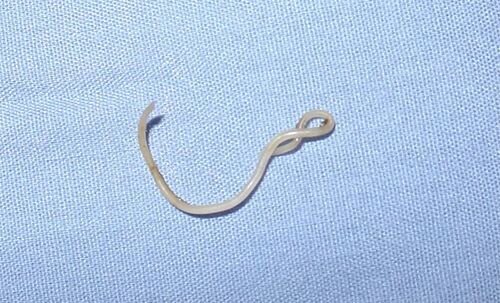
Found worldwide, the roundworm is the most common intestinal parasite found in dogs. When left untreated, these worms can cause vomiting, diarrhea, weight loss, a distended belly and a dull coat. Roundworms are spread through soil that has been contaminated with feces and can easily be spread to humans.
Hookworms
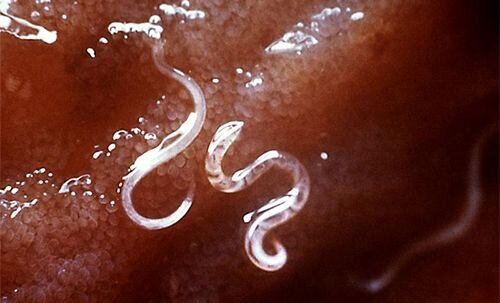
As with other worms, hookworms live in the intestines of your dog, where they attach to the lining and feed on blood. This causes blood loss which can affect old or very young dogs in particular. Other symptoms include pale gums (due to anemia), a dull coat, lethargy, weight loss and coughing. Where hookworms have been transmitted through the skin, the dog may have itchy, red lesions. Hookworms are transmitted from nursing mothers to puppies, from direct contact or when ingesting infected animals such as cockroaches.
Whipworms

Whipworms are most commonly transmitted through ingesting soil that contains eggs, often during grooming. The whipworm eggs then hatch in the small intestine before traveling to the large intestine to feed. Mild cases of whipworm may not result in symptoms, but serious infections can cause bloody diarrhea, weight loss and anemia.
Lungworms
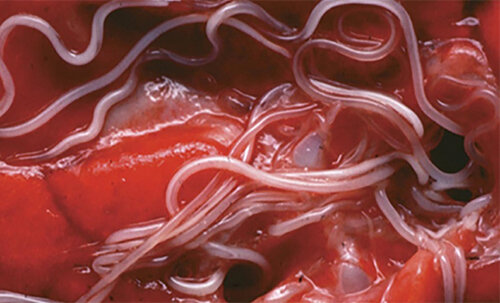
As the name suggests, lungworms affect the lungs of their host, though they do use the heart for part of their lifecycle. Unlike other worms, lungworms cannot be passed directly from dog to dog, instead most dogs pick up this parasite by eating slugs or snails who have become infected with the worm larvae. Symptoms of lungworm include shortness of breath, coughing or reluctance to exercise. If left untreated, lungworm can be life-threatening.
Life cycle of an intestinal worm
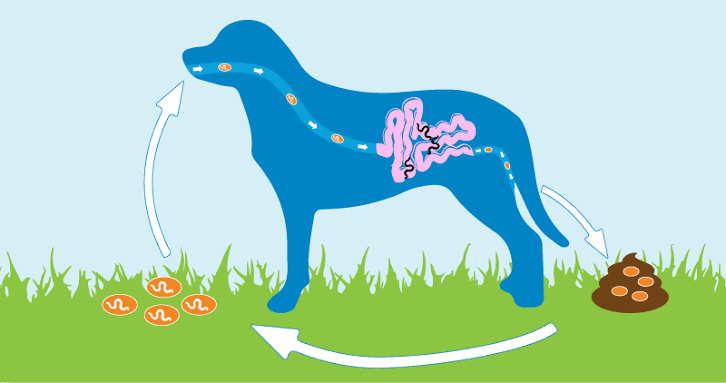
1) Egg
Eggs are passed out via the dog’s feces. Once in the environment the eggs develop and become infective. The infective eggs are then consumed by dogs or other animals such as mice or cockroaches.
2) Larva
Once inside the host, the eggs hatch as larvae. These larvae make their way through the host’s body, developing into adults when they reach the intestines. Hookworms develop into larvae outside the host, and find their way in through the skin.
3) Adult
The adult worm takes up residence in the large or small intestine (depending on the type of worm), where they feed and lay eggs. Some species can lay as many as 200,000 eggs per day.
Mites
Dog follicle mites
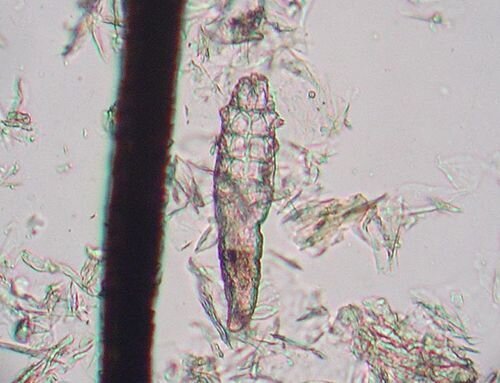
Demodex canis can lead to the development of demodectic mange, which causes skin lesions, infections and hair loss.
Itch mites
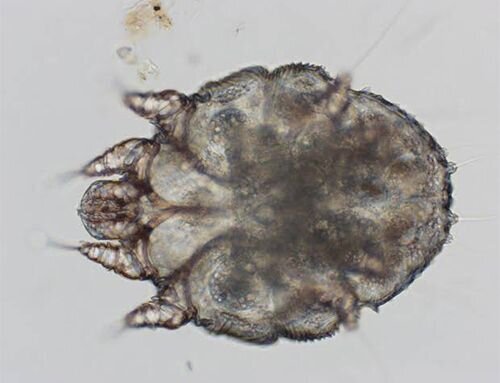
Sarcoptes scabiei var. canis is the mite responsible for sarcoptic mange, a highly contagious skin disease that causes intense itching and irritation, often leading to hair loss.
Ear mites
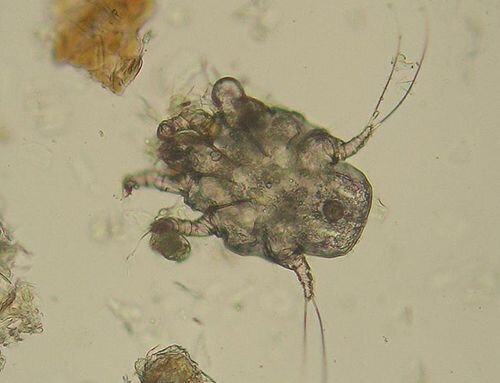
Ear mites are not usually serious, but continuous scratching by the dog can lead to inflammation or damage to the ear canal.
Life cycle of a mite
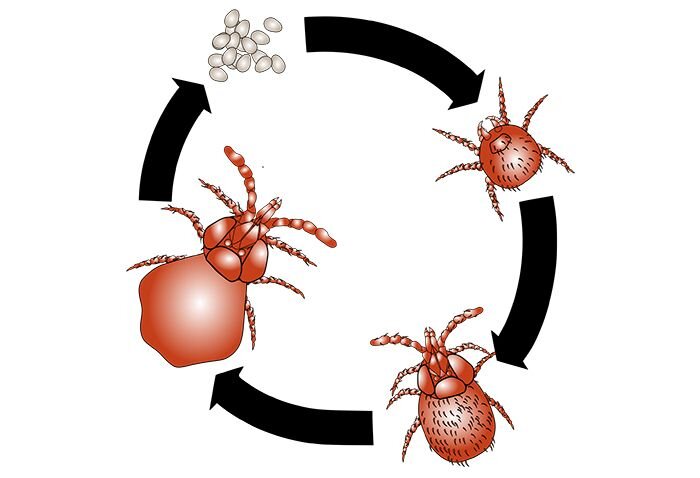
1) Egg
Depending on the species of mite, the eggs are laid directly on the host or in the host’s bedding. This can be on the hair follicles, glands or under the skin, with the eggs hatching in 3-6 days.
2) Larva
The larvae that emerge from the eggs have six legs, and usually crawl on to the host’s skin to continue their development. Some species go through two larval stages.
3) Nymph
The nymph is similar to the larva, but has eight legs. At this stage, some nymphs burrow under the skin, while others remain on the surface. Again, some mites have two lymph stages.
4) Adult
After the final molting as a nymph, the mite becomes a fully developed adult. At this stage they are able to mate. Female mites do not lay many eggs compared to other parasites, but the survival rate is high.
Symptoms of mange and mites
Itching and redness
In demodectic mange, this is caused by an immune system response that leads to inflammation of the skin. In the case of sarcoptic mange, this itching is caused by the mites themselves as they burrow under the skin. Ear mites will cause irritation within the ears.
Hair loss
Where itching and inflammation of the skin have occurred, you are also likely to see some hair loss. This may be in localized patches on the face, trunk and legs, or more general hair loss all over the body.
Sores or scabs
Excessive scratching may leave red sores or scabs on the dog’s skin. These should be treated properly so as not to leave them susceptible to secondary infections.
Shaking or scratching the ears
This only occurs in the case of ear mites. While it might seem like a harmless symptom, excessive scratching or shaking can lead to ruptured blood vessels within the ears, which cause swelling and pain.
Side effects
Overdoses may occur when administering tablets meant for larger dogs to smaller ones. If you suspect your dog has had an overdose, please contact your veterinarian immediately.
Precautions
- Keep the chews in the blister pack until required
- Keep out of reach of children and animals
- Store away from light
- Store below 30℃/86℉ (room temperature)
- Wash hands after use
- Wrap empty packet in paper before placing in the garbage
Our review
To make this review as thorough as possible, I went out and bought a 3 pack of 66-130lbs/30-60kg.
Look and Feel
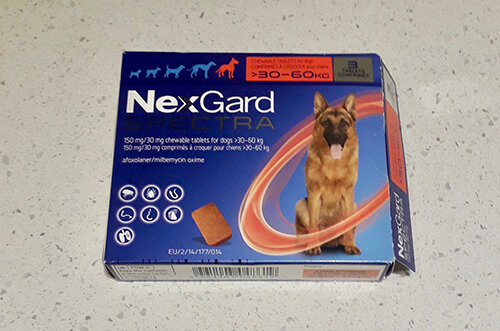
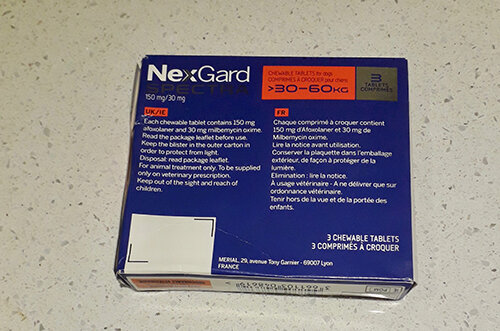
The chew itself is malleable enough for the dog to chew without it crumbling. It also has an obvious smell of meat, which should encourage any dog (my one did!) to take it was a treat.

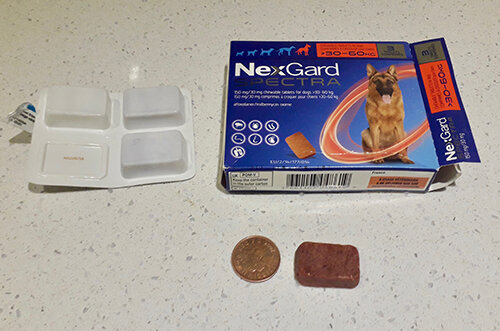
Pros
- Month-long protection against internal and external parasites
- No risk of skin reactions as with topical medications
- No residue that can cause a risk to children or other pets
- Dogs can swim or bathe immediately after treatment
- Chew formula is good for dogs that don’t like swallowing tablets
Cons
- Can’t be used with breeding or pregnant dogs as it has not been tested as safe
- Can’t be given to cats
- Does not kill tapeworm
- Fleas and ticks need to bite to be affected, so there is still a chance they can transmit disease
- Some dogs may not like the taste and not eat it
FAQs
How is NexGard Spectra different from NexGard?
Can I use NexGard Spectra with puppies?
Can I use NexGard Spectra with pregnant dogs?
Can I give NexGard Spectra to my cat?
Where to buy
 |
 |
 |
|
|---|---|---|---|
| Score | ⭐⭐⭐⭐⭐ 5/5 |
⭐⭐⭐ 3/5 |
⭐⭐ 2/5 |
| Price of NexGard Spectra | From $35.95 | From $49.59 | From $66.99 |
| Free worldwide shipping | ✔️ | ❌ | ❌ |
| Shipping time | 3-7 business days | 14-20 business days | 10-15 business days |
| Auto-delivery option | ✔️ | ✔️ | ✔️ |
| Accepts return | ✔️ | ✔️ | ✔️ |
| 24/7 support | ✔️ | ❌ | ❌ |
| Wide range of products | ✔️ | ✔️ | ✔️ |
| Loyalty program | ✔️ | ❌ | ✔️ |
| User-friendly storefront | ✔️ | ✔️ | ✔️ |
| Multilingual storefront | ✔️ | ❌ | ❌ |
| Customer reviews | 5/5 1,123 reviews |
3.2/5 1,212 reviews |
2.5/5 393 reviews |
| Shop Now | Shop Now | Shop Now |
User reviews
Have your dog tried NexGard Spectra before? Tell us about your experience below.